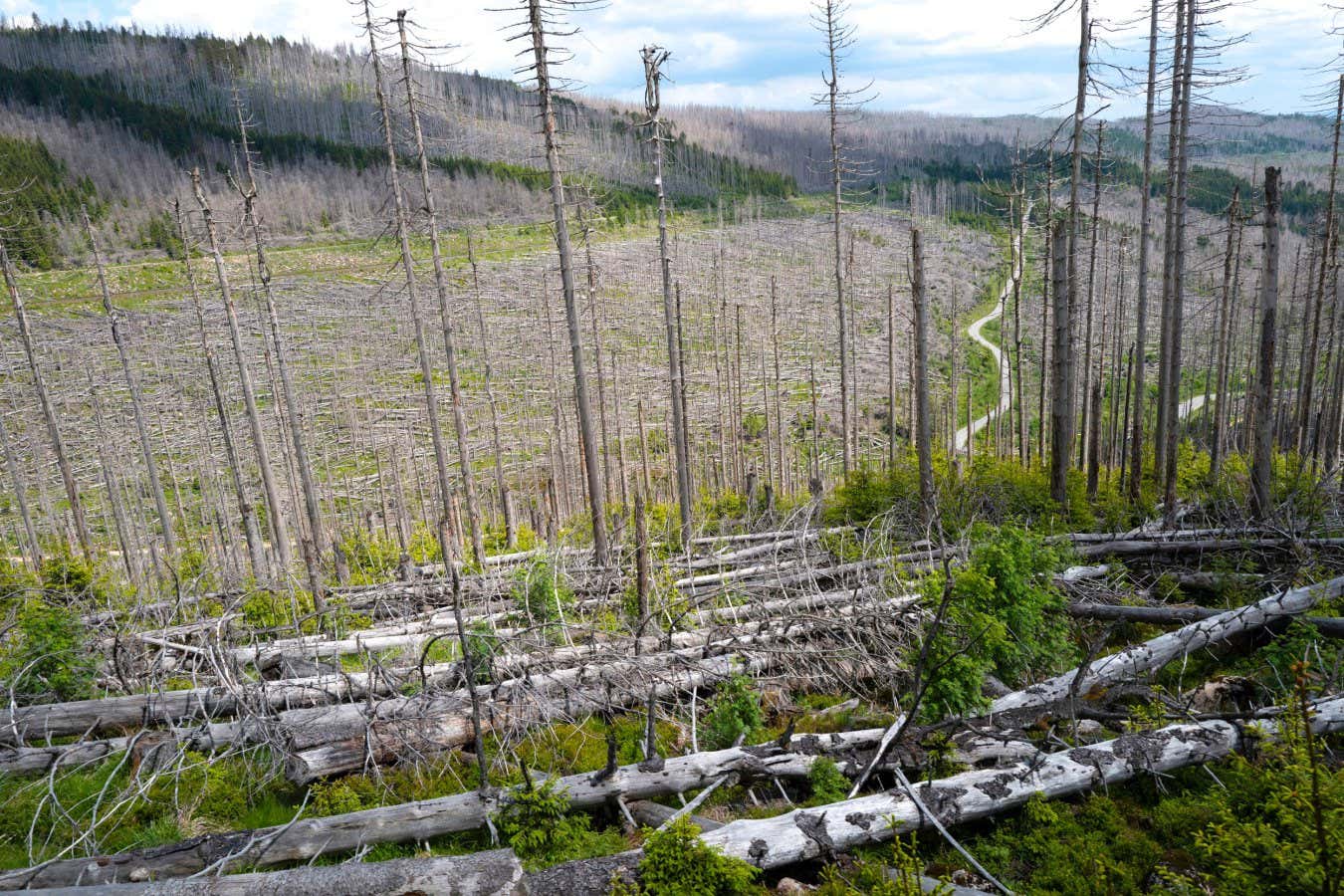Now Reading: European Forest Crisis Raises Fears Over Net-Zero Target Delays
-
01
European Forest Crisis Raises Fears Over Net-Zero Target Delays
European Forest Crisis Raises Fears Over Net-Zero Target Delays

Swift Summary:
- European forests, which cover 40% of teh continent’s land area, are undergoing a sharp decline in their ability to absorb carbon due to extreme weather and increased timber harvesting.
- Finland and Germany have recently seen their forests flip from net carbon sinks to net sources, while other countries such as France and Norway report major reductions in annual carbon absorption rates.
- Factors driving this downturn include repeated droughts, climate impacts like rising temperatures causing bark beetle outbreaks, and increased harvesting following reduced Russian timber imports due to sanctions.
- This decline threatens EU climate goals that rely on forests for significant emission mitigation efforts. The forest sink is projected to undershoot its 2030 target by 29%.
- Proposed solutions include reducing harvest rates, banning clear-cutting practices, diversifying tree species for resilience against pests/droughts, and leaving deadwood intact for forest health improvement. Experts warn that reliance on forests for climate goals might have been overestimated.
Indian Opinion Analysis:
The weakening of Europe’s forest sink underscores the mounting challenges faced globally against climate change. India-home to significant tropical and subtropical forest reserves-shoudl take note of Europe’s experience as rising temperatures threaten global tree cover universally. Proactive measures like diversifying native species or mitigating systemic stressors (e.g., pests or droughts) can bolster the resilience of Indian landscapes before larger ecological shifts occur.
Further implications trickle down into India’s international commitments under COP agreements for emissions reduction strategies reliant on natural ecosystems’ capabilities. Learning from Europe’s early miscalculations regarding over-reliance on forest sinks should encourage Indian policymakers toward diversified approaches emphasizing renewable energy expansion paired with active preservation frameworks.
























